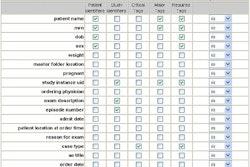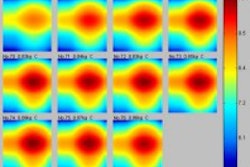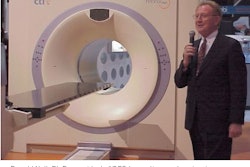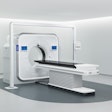(Radiology Review) Doctors from the Palo Alto Medical Center in California performed a retrospective study to determine which breast lesions apparent on mammography could undergo prone, stereotactic biopsy. During a 10-year period, they performed stereotactic prone biopsies and later determined what factors enabled biopsy completion or caused biopsy cancellation.
The criteria associated with procedure cancellation included patient, breast, lesion, and procedural variables. Potential patient factors that might lead to cancellation included excess patient weight, bleeding problems, and inability to cooperate. Only one patient was cancelled because she was considered too ill to tolerate the procedure.
According to the authors, 1,851 lesions were referred for stereotactic biopsy, and the procedure was canceled because the lesion was no longer deemed suspicious in 42 lesions (2%).
"Of 1,809 lesions in which stereotactic biopsy was considered to be warranted, stereotactic biopsy was canceled for technical reasons in 29 lesions (2%)," they wrote. They reported, "the patients underwent stereotactic, prone, histologic biopsy of 1,851 lesions (98%) and needle-localized breast biopsy of 43 lesions (2%)."
Stereotactic biopsies were performed initially using a 14-gauge automated large-core device and later a vacuum-assisted device (14- or 11-gauge). The device type changed as technical advances were implemented within the department. This study did not analyze the effect of device type on biopsy success.
There were 43 lesions referred for surgical biopsy and five (12%) lesions proved to be technically problematic. Lesion proximity to chest wall was the cause of cancellation in 10 patients, inadequate visualization due to lesion depth caused 19 cancellations and five cases were cancelled because of patient factors. They concluded, "stereotactic biopsy had a technical success rate of 98% (1,780/1,809) and was used for histologic diagnosis in 96% (1,780/1,852) of mammographically detected lesions. Inadequate lesion visualization accounted for 85% (29/34) of stereotactic biopsy failures."
Stereotactic histologic biopsy with patients prone: technical feasibility in 98% of mammographically detected lesionsJackman, R. and Marzoni, F. Jr.
Radiology department, Palo Alto Medical Clinic, Palo Alto, CA
AJR 2003 March; 180:785-794
By Radiology Review
August 12, 2003
Copyright © 2003 AuntMinnie.com



















